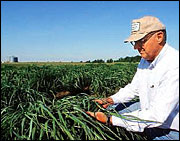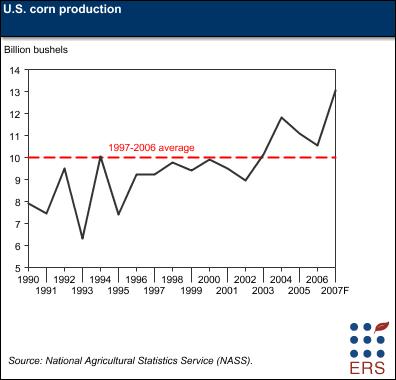
For decades now, the USDA has been dumping cash into cellulosic ethanol research (most recently through a joint venture with the DOE).
So the USDA’s analysts should know something about the prospects for mass production of cellulosic ethanol, hailed by its boosters as a panacea that can wean us not only from oil, but also from corn as an ethanol feedstock.
So what’s the latest from USDA analysts on this miracle fuel? From a report released last week:
Although cellulosic-based production of renewable fuels holds some longer-term promise, much research is needed to make it commercially economical and expand beyond the 250-million-gallon minimum specified for 2013 in the Energy Policy Act of 2005.
What? Okay, let’s break this statement down.
"Some longer term promise," huh? I realize that government analysts like to affect a dry, phlegmatic tone, but that’s hardly the sort of language boosters want to see from the agency most responsible for nurturing a technology.
Then there’s this bit: The analyst doubts cellulosic can be "commercially economical" enough to get beyond 250 million gallons by 2013. According to the same report, corn-based ethanol producers churned out 5 billion gallons in ’06 and will likely hit 10 billion by ’09.
What the researcher is saying is that six years from now, in 2013, cellulosic still won’t be economically viable.
For decades now, cellulosic boosters have been promising a major breakthrough within five years. And the future cellulosic utopia keeps receding ever-further into the future.
Meanwhile corn, our most environmentally devastating crop, entrenches its grip over the nation’s cropland. The USDA report projects corn acreage to hover near 92 million acres through 2016. In the decades before the big ethanol surge in 2005, corn typically took up 80 million acres.
So the government-mandated ethanol boom has gained us an extra 10-12 million acres bombarded by synthetic fertilizers and herbicides, and monocropped in the latest patent-protected, genetically altered Monsanto seeds — and precious little else.
In other news, the USDA released its latest forecast (PDF) on the 2007 corn crop. They’re expecting 13.3 billion bushels — by far the biggest harvest ever, and up a jaw-dropping 26 percent from last year.


